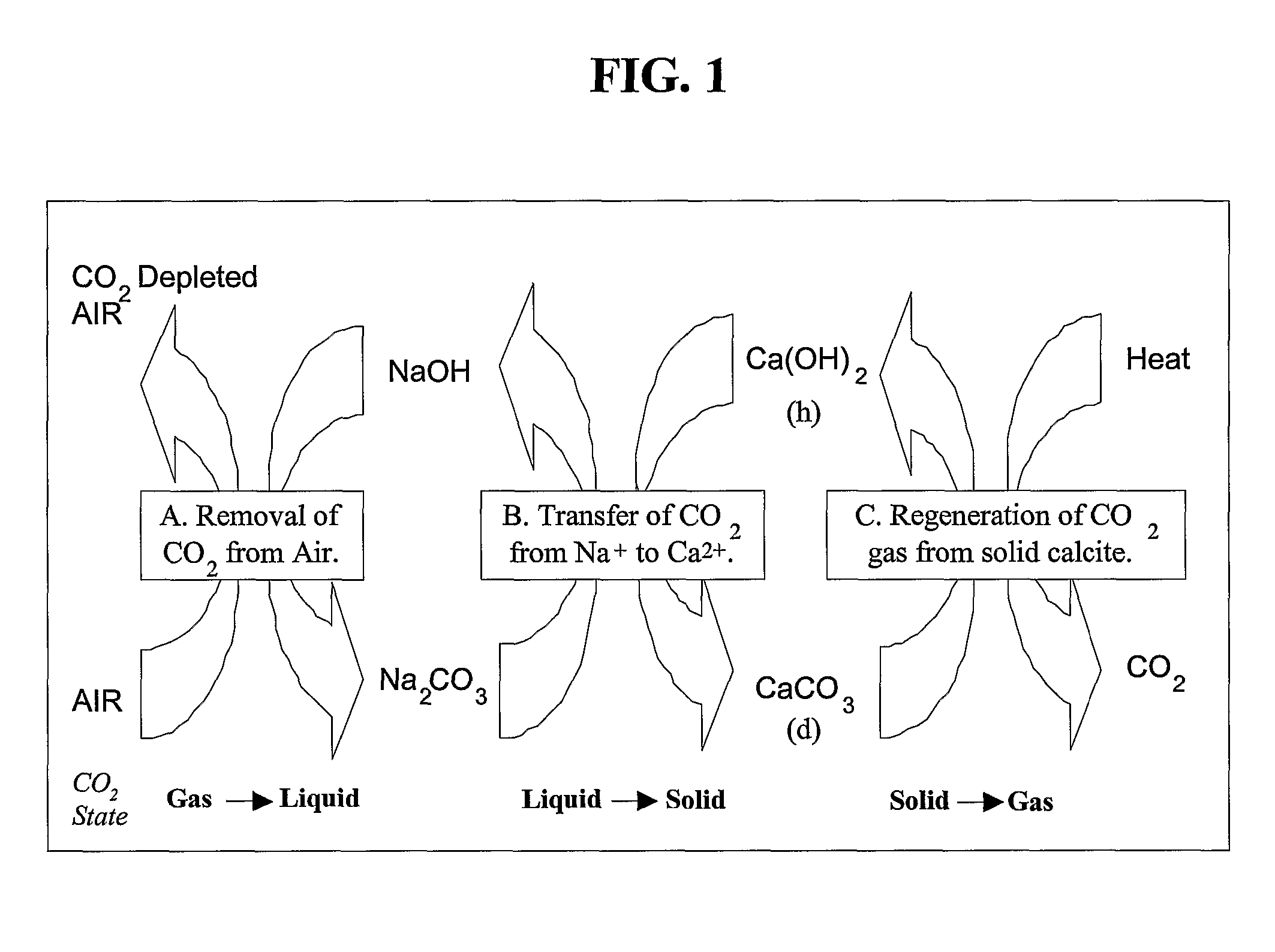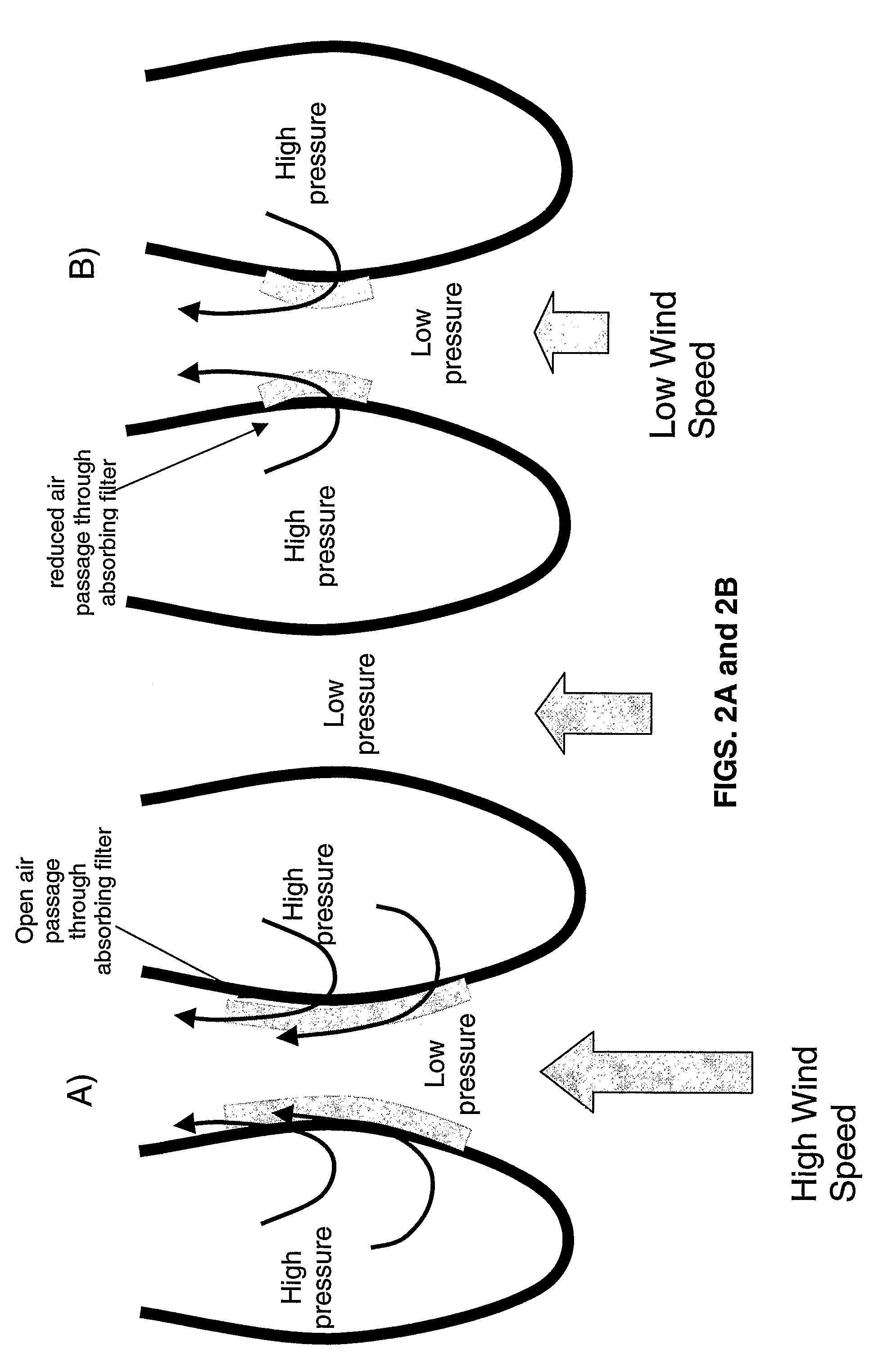Carbon dioxide capture and mitigation of carbon dioxide emissions
a technology of carbon dioxide and carbon dioxide, applied in the field of carbon dioxide capture and mitigation of carbon dioxide emissions, can solve problems such as global climate chang
- Summary
- Abstract
- Description
- Claims
- Application Information
AI Technical Summary
Benefits of technology
Problems solved by technology
Method used
Image
Examples
example 1
Capturing CO2 Directly from the Atmosphere
[0067]Alkaline Sodium Sorbents: Removal of a gaseous component through contact with a liquid is known as wet scrubbing. Wet scrubbing can be divided into processes where there is a chemical reaction between the sorbate and the sorbent and where the sorbate is physically dissolved into the sorbent solution. For the air extraction process, an alkaline sodium solvent is embraced which reacts chemically with the entrained CO2. The chemical reaction for this process is shown below as reaction (1):
2NaOH(aq)+CO2(g)→Na2CO3(aq)+H2O; (1)
[0068]The aqueous carbonate reaction can be simplified by omitting the cation, resulting in the following ionic reaction:
2OH−(aq)+CO2(g)→CO32−(aq)+H2O(l) (2)[0069]ΔG°=−56.1 kJ / mol (ΔH°=−109.4 kJ / mol)
[0070]It is noted that the enthalpy and free energy of the reaction are for a nominal 1 molar solution. The thermodynamic data, given at 298K and a pressure of 1 bar, was obtained from the available literature (Lide D. R....
example 2
[0094]A second example of a CO2 capture process and system of the present invention is presented herein below. As described, the process and system involve the formation of sodium carbonate from sodium hydroxide and CO2 from the air and the conversion of calcium hydroxide into calcium carbonate. The calcium hydroxide is recovered by calcining the limestone precipitate and then slaking it with water. Individual reactions related to the process and system, along with free energy or enthalpy values, are presented below; thermodynamic values are based on those as conventionally known in the pertinent art.[0095](1) 2NaOH+CO2→Na2CO3+H2O; ΔH°=−171 kJ / mol[0096](2) Na2CO3+Ca(OH)2→2NaOH+CaCO3; ΔH°=57.1 kJ / mol[0097](3) CaCO3→CaO+CO2; ΔH°=179.2 kJ / mol[0098](4) CaO+H2O→Ca(OH)2; ΔH°=−64.5 kJ / mol[0099](5) CH4+2O2→CO2+2H2O; ΔH°=−890.5 kJ / mol[0100](6) H2O(l)→H20(g); ΔHvap=41 kJ / mol@373K, 0.1 Mpa
[0101]In the system, sodium hydroxide, a caustic soda, is used as a sorbent. An aqueous solution can drip ...
PUM
| Property | Measurement | Unit |
|---|---|---|
| pH | aaaaa | aaaaa |
| temperature | aaaaa | aaaaa |
| pressure | aaaaa | aaaaa |
Abstract
Description
Claims
Application Information
 Login to View More
Login to View More - R&D
- Intellectual Property
- Life Sciences
- Materials
- Tech Scout
- Unparalleled Data Quality
- Higher Quality Content
- 60% Fewer Hallucinations
Browse by: Latest US Patents, China's latest patents, Technical Efficacy Thesaurus, Application Domain, Technology Topic, Popular Technical Reports.
© 2025 PatSnap. All rights reserved.Legal|Privacy policy|Modern Slavery Act Transparency Statement|Sitemap|About US| Contact US: help@patsnap.com



